A report from Oxford Economics forecasts that 960,000 new homes will be built across Australia over the next five years, well short of the Albanese government’s target of 1.2 million homes.
The construction shortfall will mean that the housing crisis will deepen and remain a “chronic” issue.
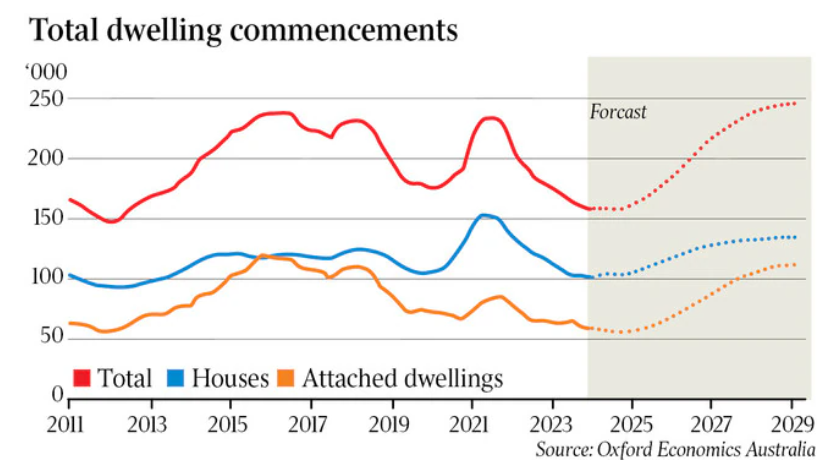
The report’s author, Timothy Herbert, says that dwelling construction will reach record levels by the end of this decade, although it will not be sufficient to meet the demand for housing.
“While industry capacity is showing signs of improvement in areas, labour shortages remain that will place a speed limit on the early to mid stage of the recovery”, he said.
“While we will continue to experience a dwelling stock deficiency, activity will inevitably recover in the residential sector. All build forms will contribute, driving total dwelling commencements to a new record level by the end of the decade”.
Hilariously, the government’s own National Housing Supply and Affordability Council has also ridiculed Labor’s 1.2 million housing target, forecasting that the private market will only supply 903,000 new homes by 2029.
Let’s get real for a minute. Australia’s record level of housing construction over a 12-month period was 223,600 in 2017. This was 7% below Labor’s target level of 240,000 homes.
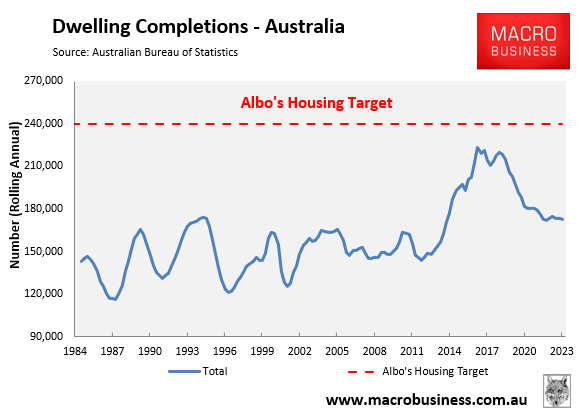
Housing construction rates tend to be negatively correlated with interest rates.
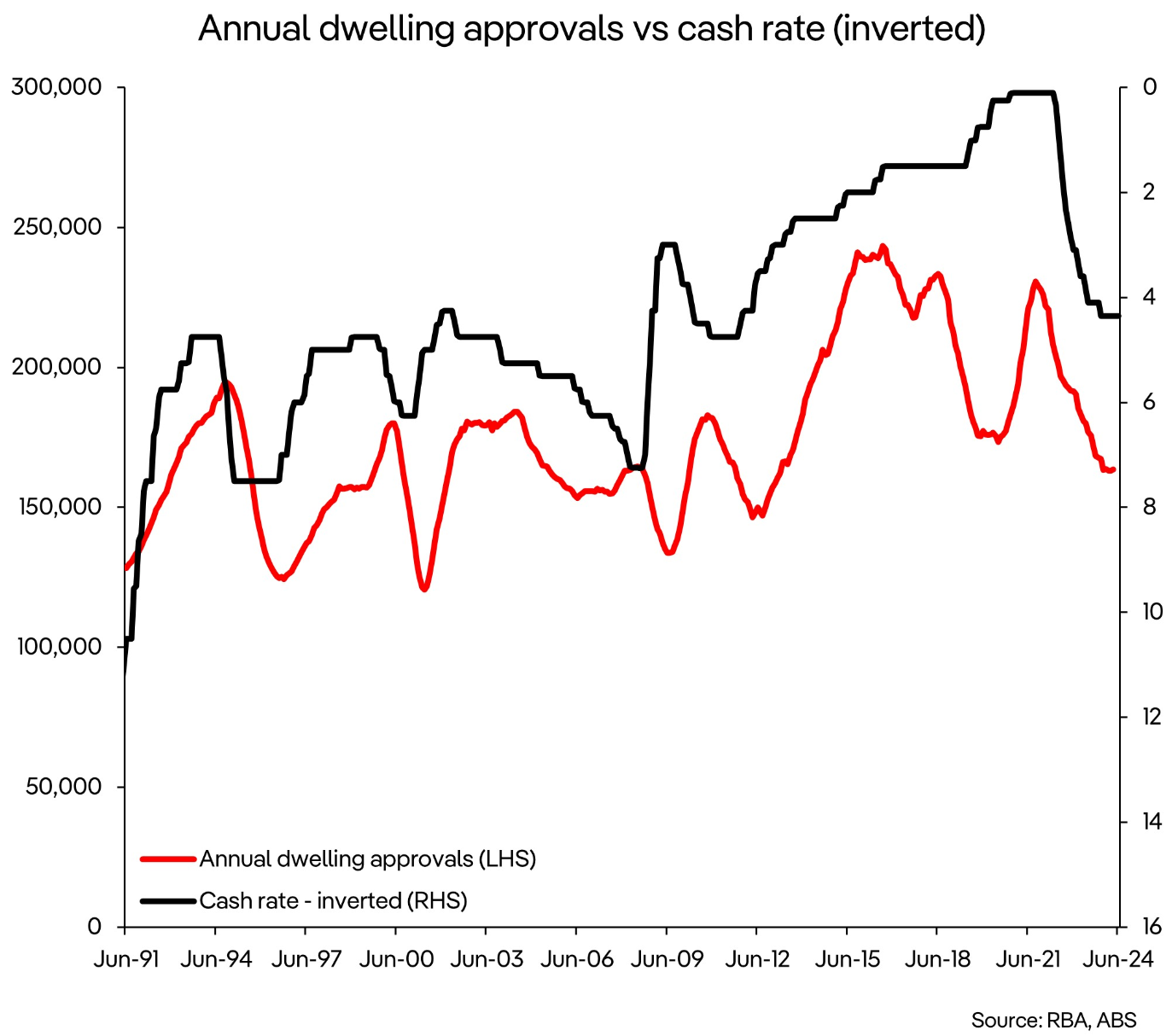
Back in 2017, when Australia achieved its record housing construction, the official cash rate was only 1.5%, compared with 4.35% currently:
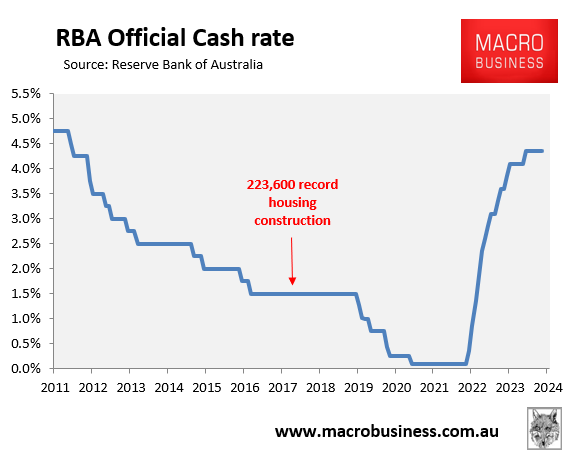
Moreover, construction costs are at least 40% higher today than they were in 2017:
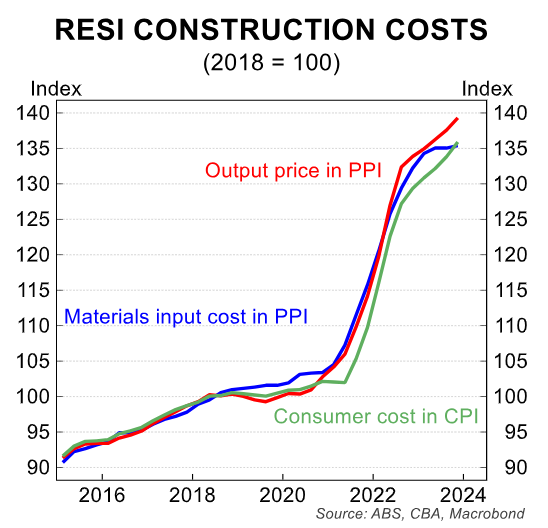
The residential construction sector is also experiencing massive insolvencies, with nearly 3,000 construction firms going under in 2023-24:
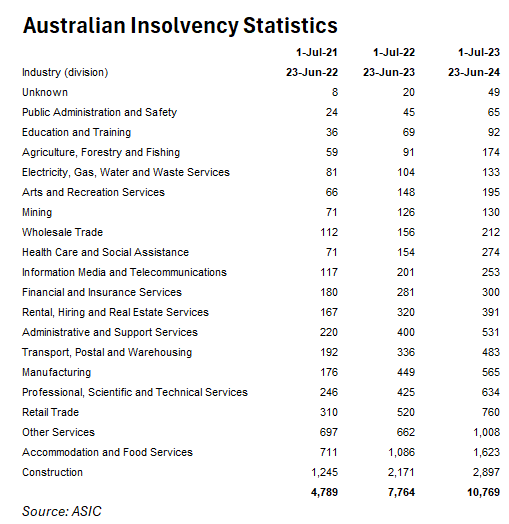
The residential building industry is also competing for scarce labour and materials with ‘big build’ government infrastructure projects:

The reality of the situation is that the structural undersupply of housing will continue so long as the federal government continues to grow the population faster via immigration than homes and infrastructure can be constructed:

Therefore, the only realistic solution to easing Australia’s housing shortage is to cut net overseas migration to a level that is below the nation’s capacity to supply housing and infrastructure.
However, the 2023 Intergenerational Report projected that net overseas migration will run at 235,000 annually into eternity, swelling the nation’s population to 40.5 million in just 39 years—equivalent to adding another Sydney, Melbourne, and Brisbane to the current population of 27 million:
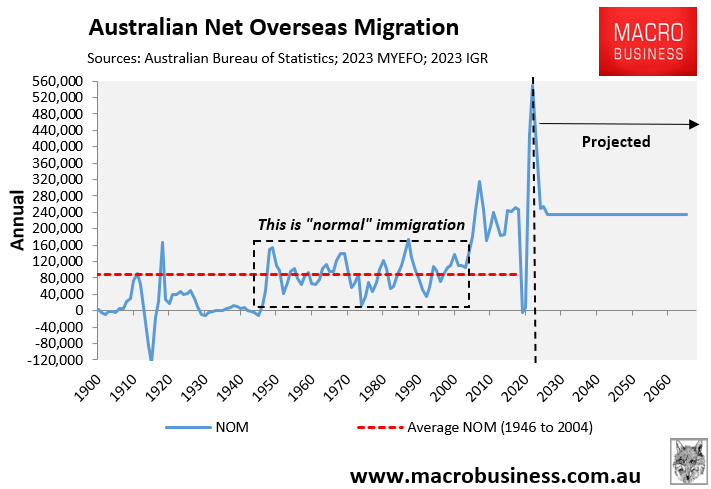
As a result, Australia’s housing shortage will become permanent.

